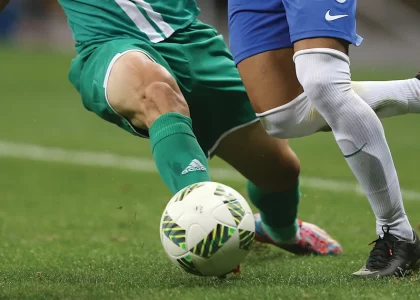They say that athletes are people who, for the sake of excitement, are happy to do difficult, but no one needs work. I can add – and sometimes dangerous. Sport is, of course, good, but some sports are already very dangerous, even deadly.
Motorsport
Fortunately, as in football, deaths in this sport are not common, mainly due to serious equipment to ensure the safety of athletes on the track. Fractures and bruises are not the worst thing in motorsport. The real health hazard comes from the enormous stress that the body is subjected to during a race.
Huge centrifugal forces, as well as constant physical and mental stress in the body, literally destroy the human body. Internal organs are gradually damaged seriously, bones and muscles too. In a race, motorcyclists lose 4-5 kg of weight due to the stress and warmth of a hazmat suit.
The same is true in Formula 1. So, trust me, most competitors in the sport don’t care about scratches and broken bones in a fall, after a few years of racing their body is literally drained to the limit and in need of a “major repair”.
Horseback riding
40,000 injuries per year, including deaths. The reasons are clear – while you are in the saddle, everything is fine, but when you fall – only the Lord will help. Fractures of the arms, legs, shoulder joints, pelvis and spine – a whole palette of injuries.
And fatal if a 800 kg horse with a steel-shod hoof goes over your head. A beautiful and complex sport in which the relationship between the jockey and the horse must be perfect. Otherwise, it remains to hope for luck, somersault and at least get bruised …
Rodeo
Here all the “extra services” are like riding a horse, but there is also something new. Such as dislocating the wrist from bull throws for an average of 8 seconds when you are on the bull. After the fall… Well, apart from the fact that the beast can trample you to death, “piercing” with one horn is enough to send you to intensive care or to the morgue.
Every year – more than 80 thousand victims, despite the fact that this sport is not at all popular all over the world. We practically do not practice it, but in some European countries it is gaining momentum. So – if you ever need to contact this sport, choose to act as a spectator.
Hockey

Hockey = broken teeth. At least. Everyone has seen hockey players with constantly broken teeth in their mouths. Why don’t they fix them? Well, it’s just that tooth decay in hockey is so common that dentists can’t keep up. Rubber protectors in the mouth do not help, and a protective helmet designed to protect the top of the head does not help either.
In hockey, injuries have become commonplace. Just playing hockey is like playing with a lighter at a gas station. Severe injuries can happen literally at any moment – from an opponent, from hitting a protective wall, on ice, from a hockey stick, a puck.
No wonder the legendary Wayne Gretzky compared the sport to gladiator fights in ancient Rome. And if you don’t get sent on a stretcher during a game, it will happen at one of the more frequent practice sessions. Hockey training is also dangerous. Or, if you rely on statistics – 80,000 serious injuries per year. Winners – congratulations!
Rock climbing
That rock climbing is a dangerous sport is obvious. There are many reasons, the difficulty is due to the fact that the forces must be perfectly distributed – in addition to going up, you must be able to go down. Many amateurs make the mistake of going all out on the ascent, forgetting that the descent is no less dangerous.
The specificity of sport is that with any severe injury, it brings you closer to a hospital bed and even death. Medical assistance comes slowly and with difficulty, and it may not always help.
In addition, after severe fractures and open wounds, there is a danger of hypothermia, heart failure and blockage of tendons and joints. Suffice it to say that rock climbing is classified as a hazard level 5 sport. For reference: the highest danger of the 6th level is fighting with the use of a combat knife and archery, “blindly”.
Diving in underwater caves
More than 8,000 people remain disabled for life per year. The potential damage to the heart, brain, and lungs is often fatal. 100 meters underwater, in a dark cave, equipment problems and any mistakes or difficulties push you closer to death. Not to mention the danger of the creatures that live in these caves.
That’s all! If you are not very well prepared, is it worth practicing these super risky and dangerous sports? Not until you are insured..
















